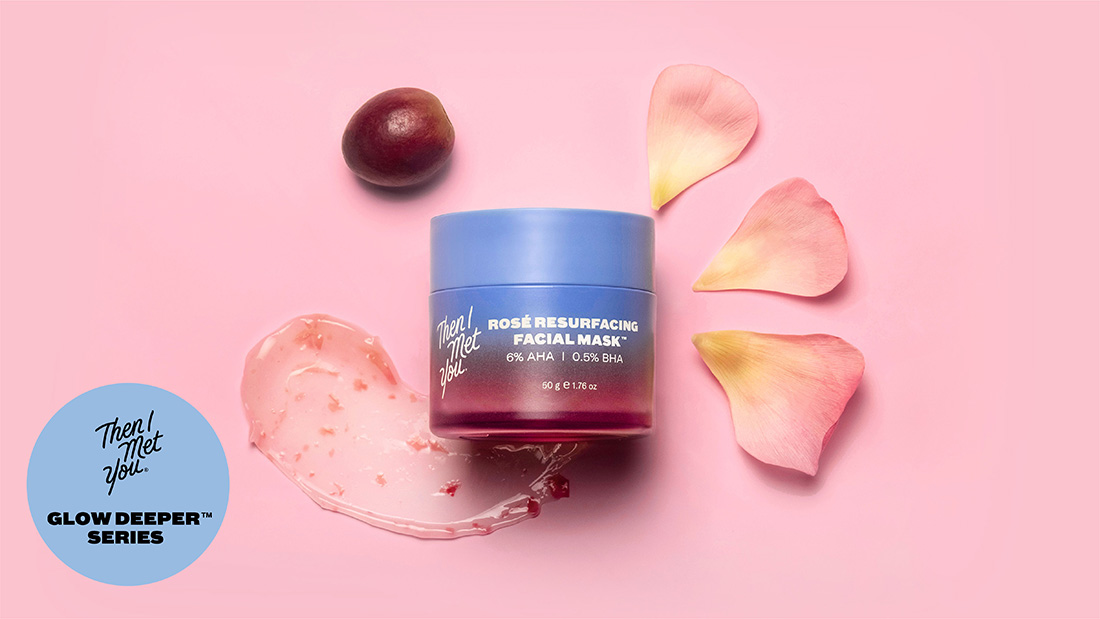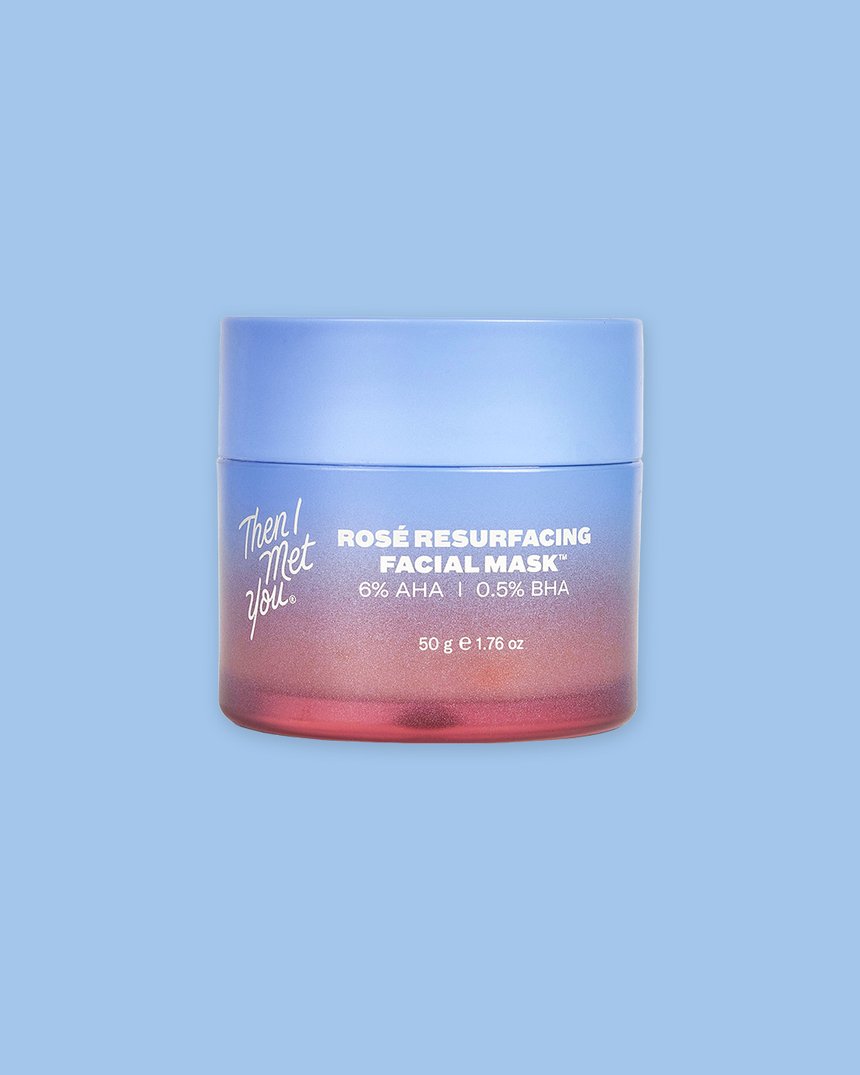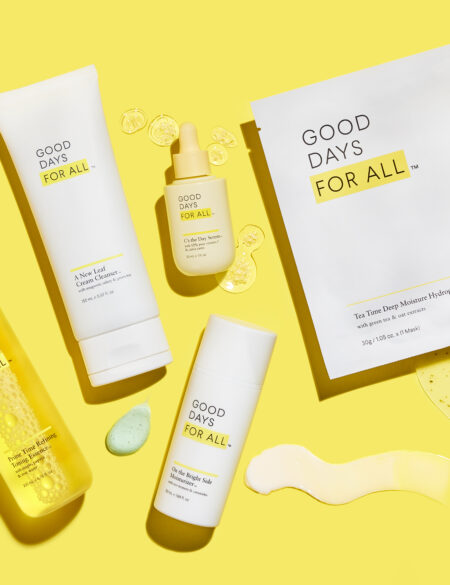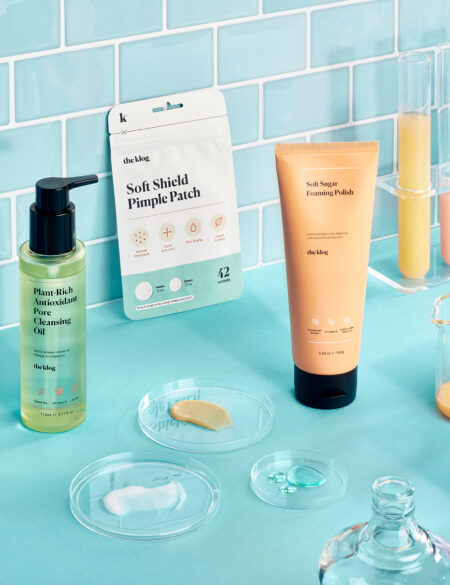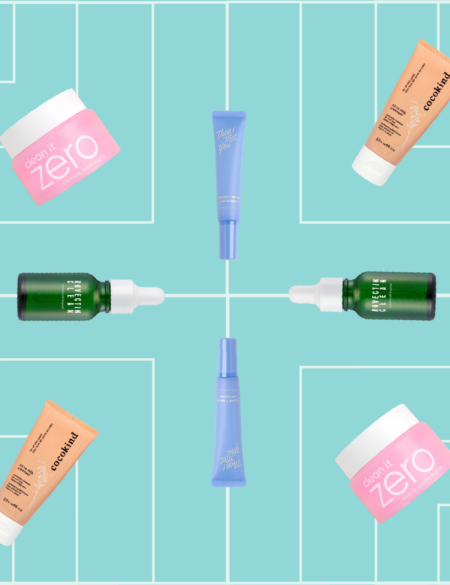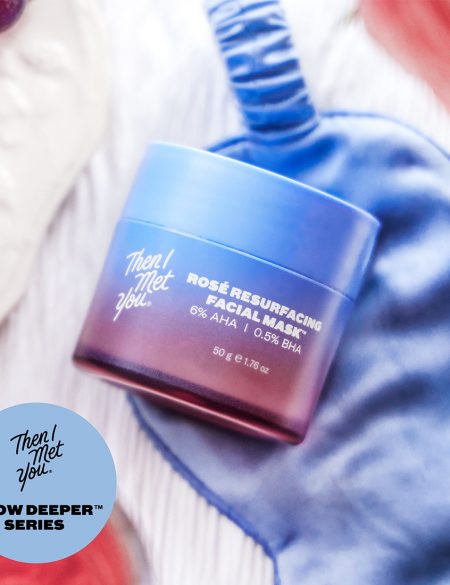After two years of development, and hundreds of iterations, Then I Met You is introducing a new addition to their family of products: the Rosé Resurfacing Facial Mask. Founder Charlotte Cho takes you behind-the-scenes in the making of this at-home treatment product that is so effective, it has been nicknamed, “The Sparkling Facial.”
Let me share a “dirty” secret of the skin care industry. Many of the formulas out there are not unique. Any brand can choose a pre existing formula that a manufacturer provides, tweak it ever-so-slightly with some minor ingredient additions, slap their label on it and call it a day.
When I decided to create Then I Met You, I refused to take that shortcut. I wanted to go deeper and invest my time and energy in creating unique, elegant formulas that truly stand out from the rest of the products out there. It’s a harder path to travel, but it has been well worth it.
Although we’re only 2.5 years old with 6 products, we have been rewarded with 16 different industry awards! Most recently, we made the list for WWD’s Top 100 Skin Care products of all time, which is no small feat. I truly believe it’s a result of our philosophy of creating products from scratch: from concept, to ingredient formulations— innovating with our R&D team who are willing to invest in the time and effort to make something special.
Introducing the Rosé Resurfacing Facial Mask
Rosé Resurfacing Facial Mask, our new addition to the Then I Met You family, is no exception. It took two years to concept, test formulations, refine packaging and confirm efficacy. This journey reminds me of what we went through to create the Living Cleansing Balm, which is now considered a holy grail product for many. For our mask, we went through so many iterations, that I have to admit, it even tried our partners’ patience this time around.

Why it’s nicknamed, The Sparkling Facial
The Rosé Resurfacing Facial Mask is not any ol’ acid mask. You need to trust me when I say, you will see results by just using it once a week. Even after the first application, your skin will look smoother, brighter and firm to the touch. Most importantly, your skin barrier will be healthy and will be armed with free radical fighting power. I am personally blown away by the impact it has on my skin, not only has it brightened my skin, but the texture has improved and my skin has a bounce and glow to it that I’m proud to be foundation free on most days. And it’s not just me, many people in our focus group described it as such a luxurious and effective mask that you feel you came out of an hour-long facial. It quickly earned the nickname, “The Sparkling Facial.”

The Rosé Resurfacing Facial Mask has a dreamy, elegant application: a lightweight, jelly texture that feels soothing and cooling to the touch. Note that the texture allows it to be the most effective delivery system to the skin, so that it helps your skin really soak up the powerhouse ingredients.
As soon as it is applied thinly all over the skin (avoiding the eye area), you’ll feel a slight tingling sensation. Almost, as if you’re feeling the gentle effervescent sensation of sparkling champagne on your skin.
Giving credit to our AHA BHA Rose Complex
What you’re feeling is our AHA BHA Rose Complex, which is a delicate and optimal blend of glycolic acid and lactic acid (AHA’s – 6%), with a touch of salicylic acid (BHA’s – 0.5%).
Both glycolic and lactic acid are incredibly effective acids to lift away dead skin cells that are otherwise superficially damaged (even sundamaged skin), to reveal a brighter and more smooth complexion. These acids are my favorite, because when it’s used right, it can even fade your dark spots and make your wrinkles look smaller (which is currently my biggest skin concern).
Salicylic acid was included because it’s oil loving and acne fighting, and by going deep into your pores, it’ll take away any debris that will contribute to a breakout. I had to include this because I wanted to address the overwhelming amount of people who select “large pores” and “hormonal acne” as one of their main skin concerns. Although you can never “get rid” of large pores, you can definitely minimize the look of them on your skin.
Fine Wine For Your Skin
You’ll notice that suspended in the formula are real damask rose petals, which contribute to the natural blush tone. With our AHA BHA Rose Complex being so powerfully effective, I wanted to ensure that I balanced out the acids with ingredients like rose extracts that would attract moisture to your skin, to keep it from being stripped dry, and instead, plumping it up and making your skin look and feel more firm. It was my mission to avoid the dreaded pitfall of one too many acid masks out there: masks that dry up your skin and/or over exfoliate.
Also, because antioxidants are such an important part to any anti-aging formula (because they strengthen your natural skin barrier and is proven to slow down the aging process), the formula has a blend of resveratrol and natural grape extracts (which are also natural, mild forms of AHA) to ensure you keep free radicals from damaging your natural collagen and elasticity levels in your skin.
Just 15 Minutes A Week of “Me” Time
Good things truly do take time. I hope you can see the amount of intention that went into developing such a gorgeous, one-of-a-kind formula at Then I Met You. You can only imagine the excitement we have on our team to finally see it in your hands, and for you to experience a Sparkling Facial, in the comfort of your own home.
Our only ask: Set your intentions when you use the Rose Resurfacing Facial Mask. Take these 15 minutes out of your week for a little bit of self care, and self love. (I shared my personal story of why I needed that 15 minutes for my mental health here). We’re all going through quite a lot, with the ongoing pandemic alone, so it’s more important than ever to carve out time of your day to reset and renew yourself.


